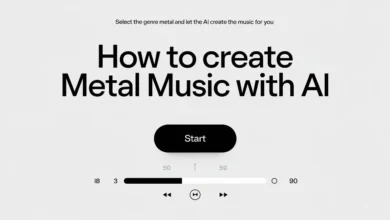
How to Become an AI Prompt Engineer: A Step-by-Step Guide (2024)
As ChatGPT came out in 2022, it has become the subject of prevalent discourse related to Generative AI. It gets to decide the future of AI that we make use of and that affects our thought patterns. Conversational AI is demonstrated with the help of ChatGPT or Google Gemini. You can type in a few lines, and as usual, you will always have the information that you need. And finally, the question is: then who makes those amazing AI models?
The whole AI cycle involves different specialists such as Machine Learning engineers, Artificial Intelligence engineers, Data Scientists, and Prompt engineers and all are constantly working with new AI skills. The role of a prompt engineer may become the next greatest one, the way the job of a software developer did in the early 2000s.
Your main concern is “How to become an AI Prompt Engineer”, we have covered all the things that will help you to achieve your goal. Let’s get started!
What is Prompt Engineering?
Prompt engineering means giving language models like ChatGPT the right instructions so they will work better. It is about right questions and telling them what you want. For instance, you might want a list of blog topics, product descriptions, or coding help. A good prompt should be a person’s desire for what a machine can supply.

As a prompt engineer, you have to be able to create concise yet compelling prompts with different approaches to achieve the results you need.
What does Prompt Engineer do?
Even if you’re not much into technology, you can still get ChatGPT to help you out. However, what roles would the prompt engineers play in that? By the way, they already know how to hit on ChatGPT the right questions for the best results. They design conspicuous questions as well as prompts to ensure high performance from ChatGPT.
Imagining you want to build a login page with Python would be like. You could ask ChatGPT to “Write a Python code to create a login page.” But a prompt engineer might phrase it like this: “Imagine you are a Python developer and you are teaching a junior developer how to create a login page with username and password input fields and a login button.” Prompt engineering is all about.
Prompt engineers not only take care of the big language models, but also they are in charge of the technical aspect. They apply AI model testing via different prompts. They observe how AI answers to various queries, looking for repeating patterns or symptoms of bias. Thereafter, they undergo the trial and error method by trying out different prompts to fix any defects.
In other words, prompt engineers are of crucial importance in helping AI to understand us properly and come up with correct answers, especially for specific requests.
How to Become an AI Prompt Engineer in 7 Easy Ways
Starting a career as a prompt engineer is a clever choice, especially since Generative AI is growing fast. It’s expected to keep growing by 20% every year for the next decade. Let’s explore how you can become an AI prompt engineer.

1. Skill the Python
It’s great to be a good prompt engineering. Python is necessary and you know this well. Python aids in fast the utilization and discovery of NLP and deep learning models.
Of course, the prompt itself is far from being a comprehensive language model. As a prompt engineer, what is expected of you is to make sure that the prompt is complete, not the entire language model. Privacy is another major concern related to AI development. While it has been thoroughly discussed among scientists, we still don’t know entirely how to regulate mass data collection and use. Additionally, well-paying prompt engineering jobs might require you to look through data from language models and polish them. Python when handling data is cool as a cucumber.
Here are steps to learn Python for prompt engineering:
1. First, take some Python basics and then move to machine learning models.
2. Look up libraries such as NumPy, Pandas, Matplotlib, etc., and Scikit-learn.
3. Go ahead with the use of NLTK, spaCy, and TextBlob libraries specific to natural languages, among many others.
4. Practice analyzing data.
5. Know various machine learning techniques.6. Practice Python coding often!
2. Start with the basics of AI
Your first step into the professional world should be familiarising yourself with the technology that you’ll be utilizing. First and foremost, it is necessary to grasp the meaning of AI and then break it down into its parts. The main idea behind artificial intelligence (AI) is quite interesting: machines enable senses like humans to do special work.
Machine learning and natural language processing are just a small part of AI. The areas of data science, deep learning, and many other fields of AI are also among them. Begin by grasping the concept of these terms and getting a feel for how they differ from each other.
Here are some resources to learn the basics of AI:
– AI Fundamentals Skill Track: It will acquaint participants with the general terminology, LLMs like ChatGPT, concepts of AI Gen, or a brief overview of Machine Learning.
– Understanding Artificial Intelligence Course: This course discusses the impact of AI on each aspect of life, such as AI in daily life, AI at work, companies using AI, and generative AI models.
The large language models (LLMs) are also referred to as deep learning and NLP models. This applies even in a situation where not all NLP engineers build their models from the ground up. However, NLP engineers must still have good NLP and deep learning skills to effectively understand the models that they are working on.
3. Learn NPL
Natural language processing — NLP for short — as we speak, is the most popular thing in artificial intelligence (AI). By the use of such technology, devices can understand human languages. What’s more, it not only contributes to making machines produce answers that sound as if they are from humans but even beyond.
As it is good at making machine learning models to give helpful replies. Therefore, if you are ambitious to possess this skill, you have to strengthen your NLP. Check out NLP tools like NLTK, spaCy, and Transformers, the tools to be used later when you will be working with language datasets.
First, you can learn the text handling principle, come next you can discover how to break up the text into pieces (tokenization), another thing that determines emotion in the text (sentiment analysis) also find short summaries of text (text summarization).
4. Learn About Deep Learning
As you continue away as a prompt engineer, you will hear names of large language models like GPT, Gemini, and others. The large language models are the big deep learning systems that can interpret and generate human language. Taking these challenges right could only happen when there is an in-depth understanding and knowledge about deep learning.
As an example, ChatGPT has over 175 billion “neurons.” One should take a look at neural networks, which “neurons” are the building blocks of. They are the supporting elements in many deep learning applications which is very useful and often indispensable. More than two years ago, you may have heard that the ‘T’ in GPT stands for ‘Transformer’. These big language models use Transformer setups so, the kind of AI is, like ChatGPT.
It is a way of making the model perform well by making it focus on the important components of the input data. Acquiring knowledge about the configurations of this type of market will indeed be very helpful in creating good prompts.
5. Custom Application Fine-Tuning
Given that, small companies do not have enough resources to train large language models from scratch. Thus, you may be a prompt engineer as a result. Your mission is to fine-tune the pre-existing models and make them meet their necessities.
Let’s consider a case where you need a pre-trained model to have the HTML page format as desired. And data about UI and HTML can be used to customize it so that it better suits your use.
In general, a prompt engineer shall be in a position to mold any pre-existing model to a uniform purpose. For this, you need to give the previously trained models a limited and applicable dataset.
Although skills like preparing data, adjusting settings, and using pre-learned graphs are crucial when it comes to tweaking a pre-trained model on your own. Remember, this expertise lies in what the role truly requires.
Beginner-level roles that don’t require an understanding of NLP and mastering prompts may suffice. However, for senior or well-paid positions, it may be required to have more practice with advanced features of NLP tools, deep learning, and tricky prompting methods.
6. Become a Master at Making Prompts
When you put a feature into the language model, it spits out results based on that feature. That is, you would define the instruction that AI would follow and you’d refine it to achieve desired outcomes, thus you’re an engineer.
The major tasks of the prompt engineers are writing the prompts clearly and improving the existing ones. They have to write questions and sentences that form a training sample to be used to generate an AI model that will provide helpful responses.
The purpose of this mission is to communicate effectively, and therefore, you require a good writing skill. Examples of text improvement are context and instructions. However to become an accomplished prompt engineer you need to become proficient and master the advanced methods that will be handed in the next section.
7. Remain in touch with the AI Community
Check out online classes. There are plenty of such courses on prompt engineering now. Getting certified does not only give you skills but also demonstrates to others that you have acquired them.
Keeping yourself up to date is essential, especially in emerging fields like OpenAI’s Sora. One of the most effective ways to achieve this is through being known in the right community. Subscribe to the top prompt developers on LinkedIn, Medium, and Twitter feeds.
Conclusion
It’s a great period to kick start with Gen AI. Tech entrepreneurs are desperately in need of conversational AI that will help them introduce AI into their businesses quickly.
Becoming an AI prompt engineer is fulfilling and at the same time lively. You don’t have to be a skilled expert to do it as we have previously mentioned in this article.
Frequent Asked Questions (FAQ’s)
How can I become a prompt engineer?
Here are the basics to become a prompt engineer:
- Skill the Python
- Start with the basics of AI
- Learn NPL
- Learn About Deep Learning and Transformer Models
- Custom Application Fine-Tuning
- Become a Master at Making Prompts
- Remain in touch with the AI Community
How much does the AI Prompt engineer make?
The AI Prompt engineer makes between 90,000$ and 145,000$ annually. It depends on the AI Prompt engineer’s capability and how much he is.
Is Prompt Engineer the Future?
The future of AI Prompt engineers is bright and full of potential. If you want to start work as a Prompt engineer you should go for it.



